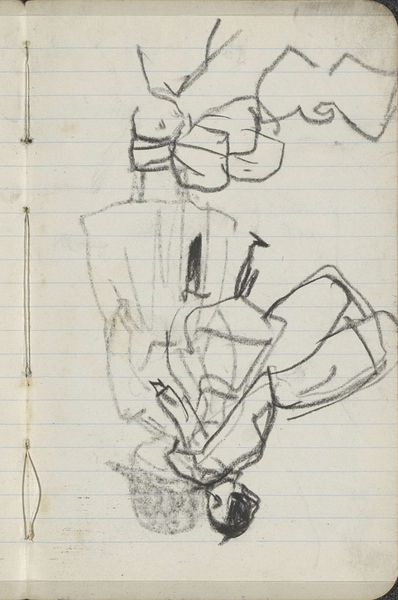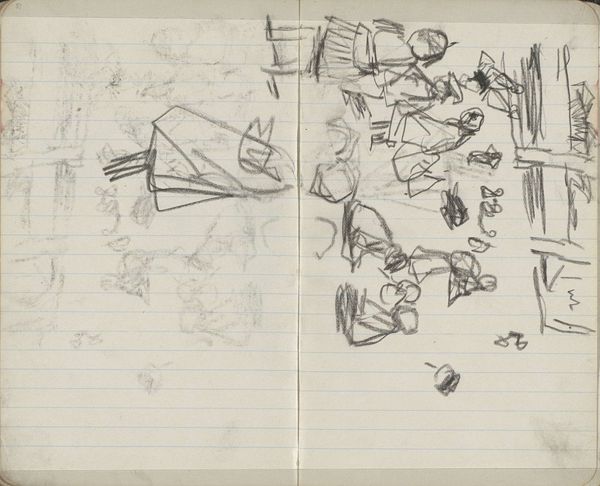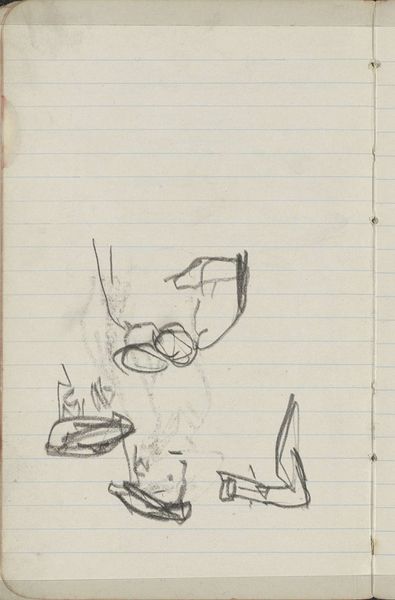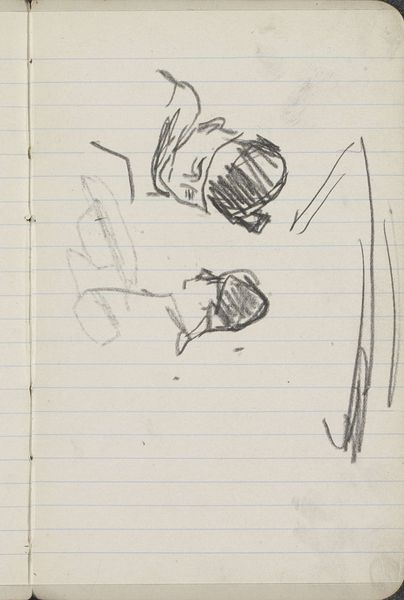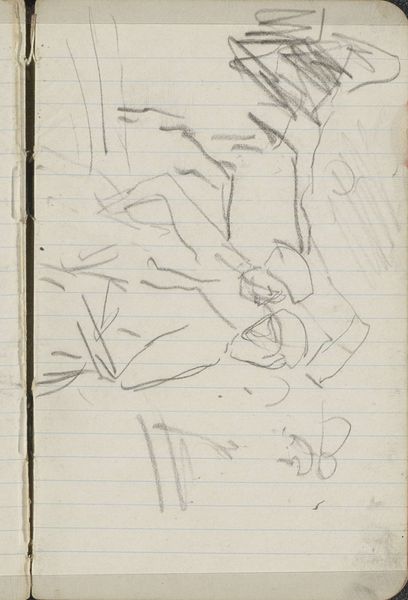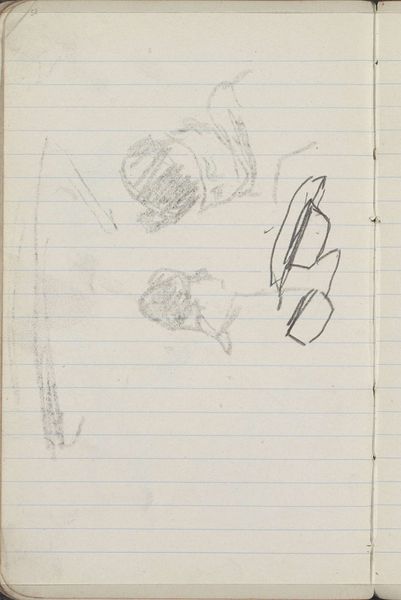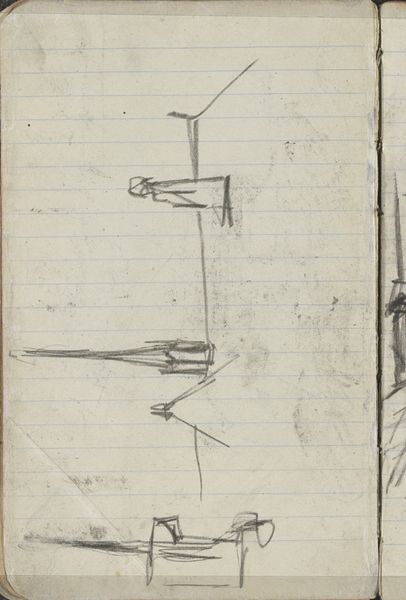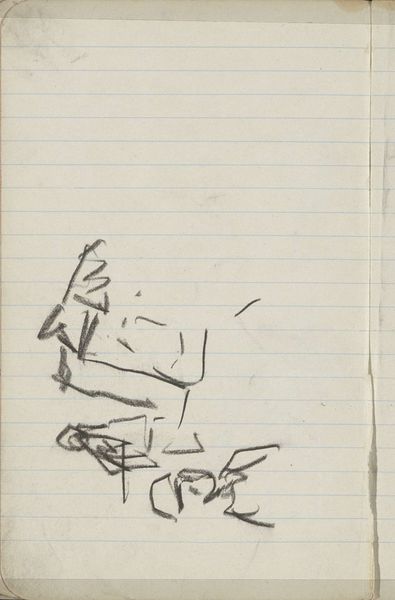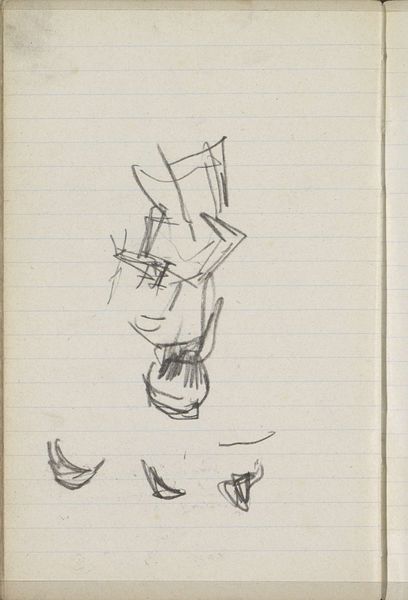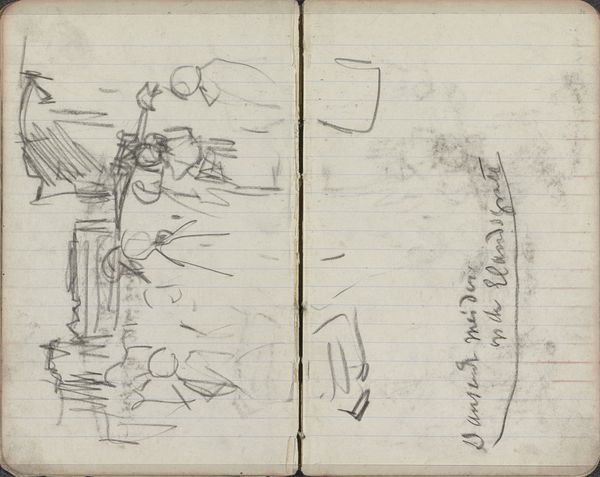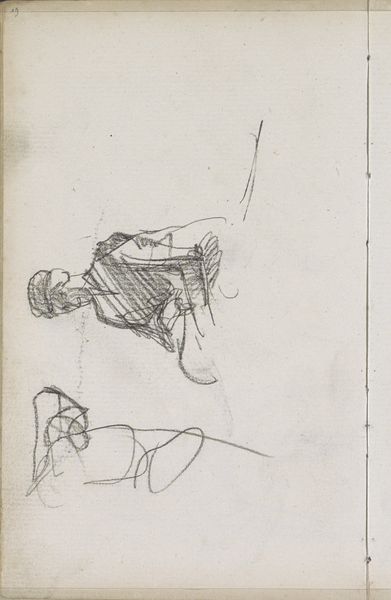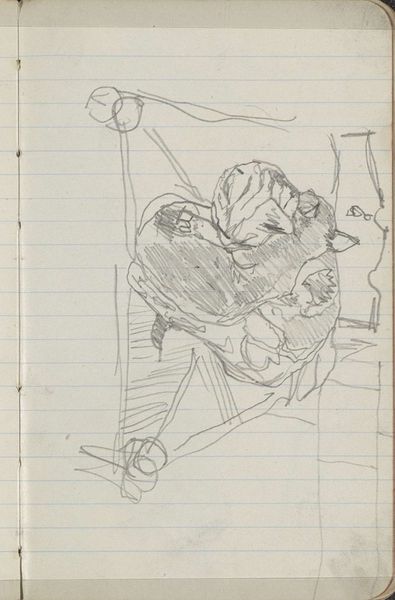
Copyright: Rijks Museum: Open Domain
Curator: Before us is "Figuurstudies", or "Figure Studies", a graphite drawing made in 1893 by George Hendrik Breitner, found within the collection of the Rijksmuseum. Editor: There's an appealing, almost frantic energy to these marks. The overlapping lines create a sense of fleeting observation, a kind of visual shorthand. Curator: Breitner, though often associated with the Amsterdam Impressionism movement, held a unique position. He was deeply interested in the depiction of working-class life, in particular, the experiences of women in urban settings. Editor: I’m particularly drawn to the upper figure. Its dynamic pose, combined with the artist's assured strokes, presents a real study of balance and weight. Curator: Exactly, and looking closer, we might infer that these studies explore poses and attitudes for some of Breitner's other known works, which makes the personal nature of this work clear. Editor: Indeed. Considering the formal qualities, the use of negative space, as simple as it may seem, adds dimension and directs the viewer's gaze. And there is so much of the artist visible here. The speed and looseness allow the personality of the maker to radiate outward, which is really rewarding. Curator: Right. These studies aren’t isolated acts of drawing; they act as portals through which we can access the social, political, and cultural layers of Breitner's time. It becomes a lens for considering urban change, the status of women, and shifting social landscapes in the Netherlands. Editor: This exploration of tonal variation with just a single medium allows us to understand the potential he saw in these figures, the shadows offering dimension. Curator: Thank you for helping us bring this piece into a more relevant context, beyond its physical presence. Editor: Thank you. These initial formal qualities acted as a stepping stone for examining a world beyond mark-making.
Comments
No comments
Be the first to comment and join the conversation on the ultimate creative platform.
